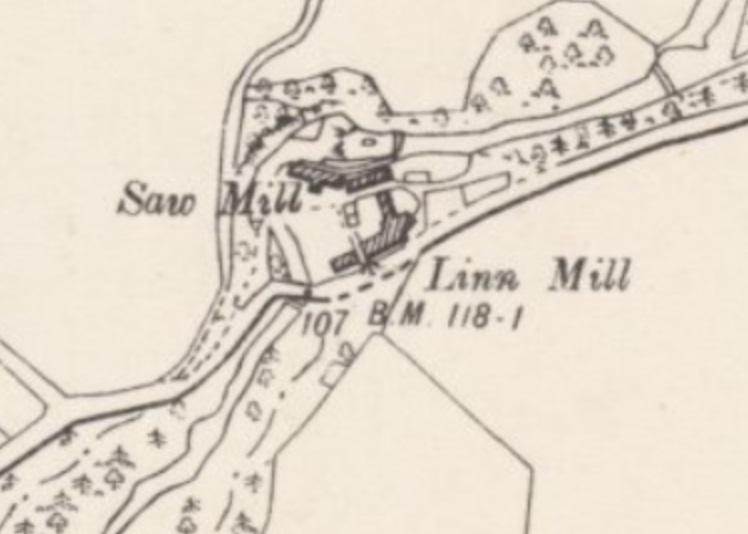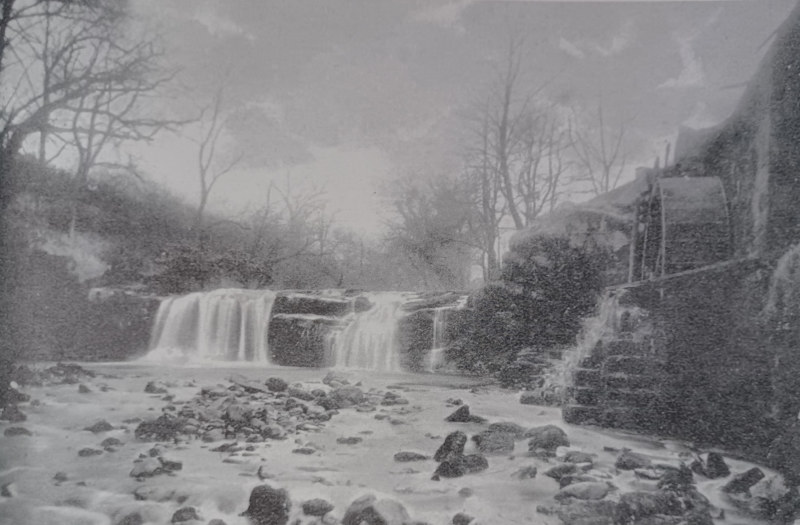The small hamlet of Linn Mill played host to a small Lowland region malt distillery for a short period.
Linmill Distillery was opened by John Mill in or before 1820. The distillery is noted in the July 1821 excise accounts as having a 238 gallon wash still, and a 159 gallon low wines still. The distillery produced 3854 gallons of spirit in the accounting period between November 1820 and February 1821.*
In the year 5th January 1825 to 5th January 1826, Linmill is registered as owned by James Mill snr., and has produced 1,122 gallons of spirit in that year.^ In the following six months he distilled just 169 gallons of spirit^.
The next set of excise accounts, from 1827, show the distillery produced 789 gallons of spirit in the quarter to 10th October 1826, and 3092 gallons of spirit in the year to that date. 623 gallons were produced in the six months to 5th April, 1827,** which is a marked decline on the 1821 figures.
In 1974 and again in 1979 the Clackmannanshire Field Studies Society carried out an excavation on the former Linn Mill sawmill site, as marked in the 1860 and 1901 OS maps.

OS map 1860

OS map 1901
From the CFSS Linn Mill excavation report, they found that the site was powered by water from a dam on the adjoining Black Devon (marked on the right of the OS maps above), and that a building on the south side of the river contained evidence that it may have had a grain drying kiln, the kiln base tiles of a type made locally and dating around 1790-1810. Its thought this building was in use between 1796 and 1840.

Mill water wheel and weir at Linn Mill
This could possibly have been the site of the distillery following the end of its use as a grain mill (though I have no proof of this as yet). The sawmill is thought to have been constructed on the site around 1840, which could easily tie in with the evidence we have seen so far. The sawmill was long out of use by 1898, when the 1901 OS map above was surveyed.
We are still looking up records on this one, if anyone has further information on this, please get in touch.
References:
*Parliamentary reports from committees, July 1821.
^ Excise accounts, 1825/26.
**Parliamentary accounts, June 1827.
Clackmannanshire Field Studies Society's Linn Mill excavation and survey report, 1974 and 1979.
